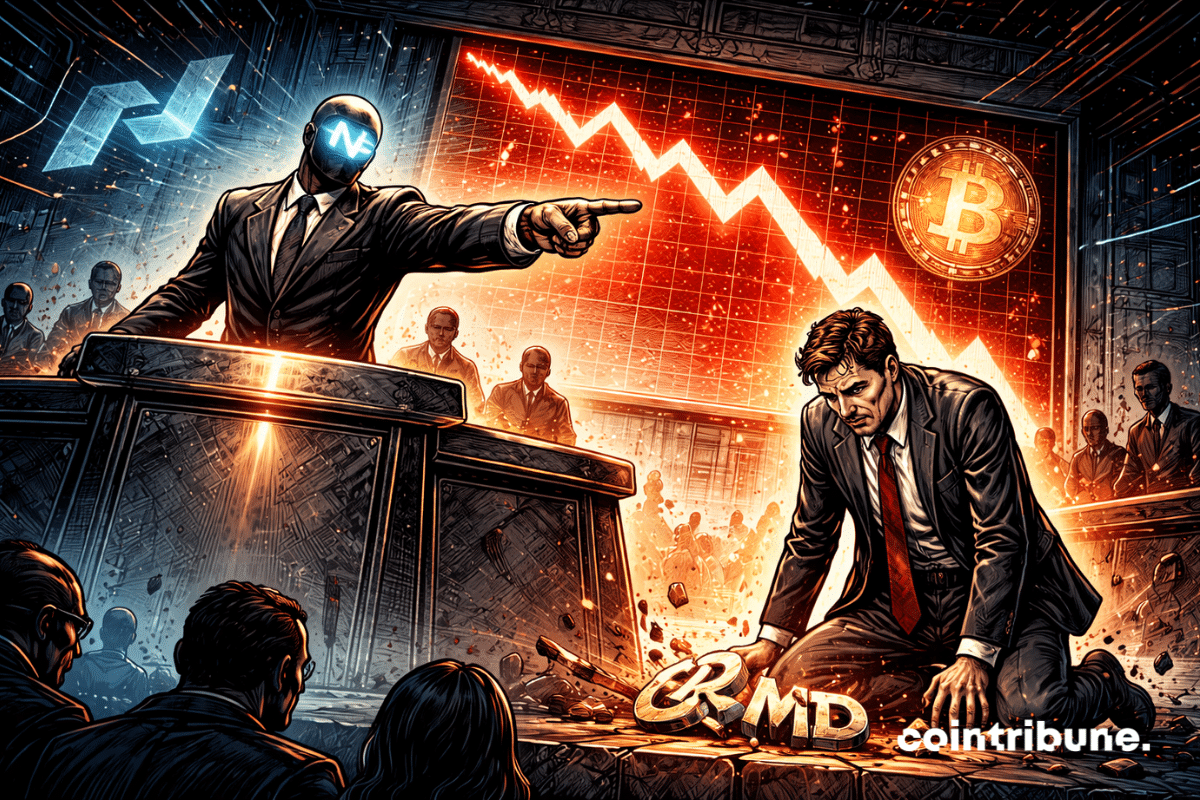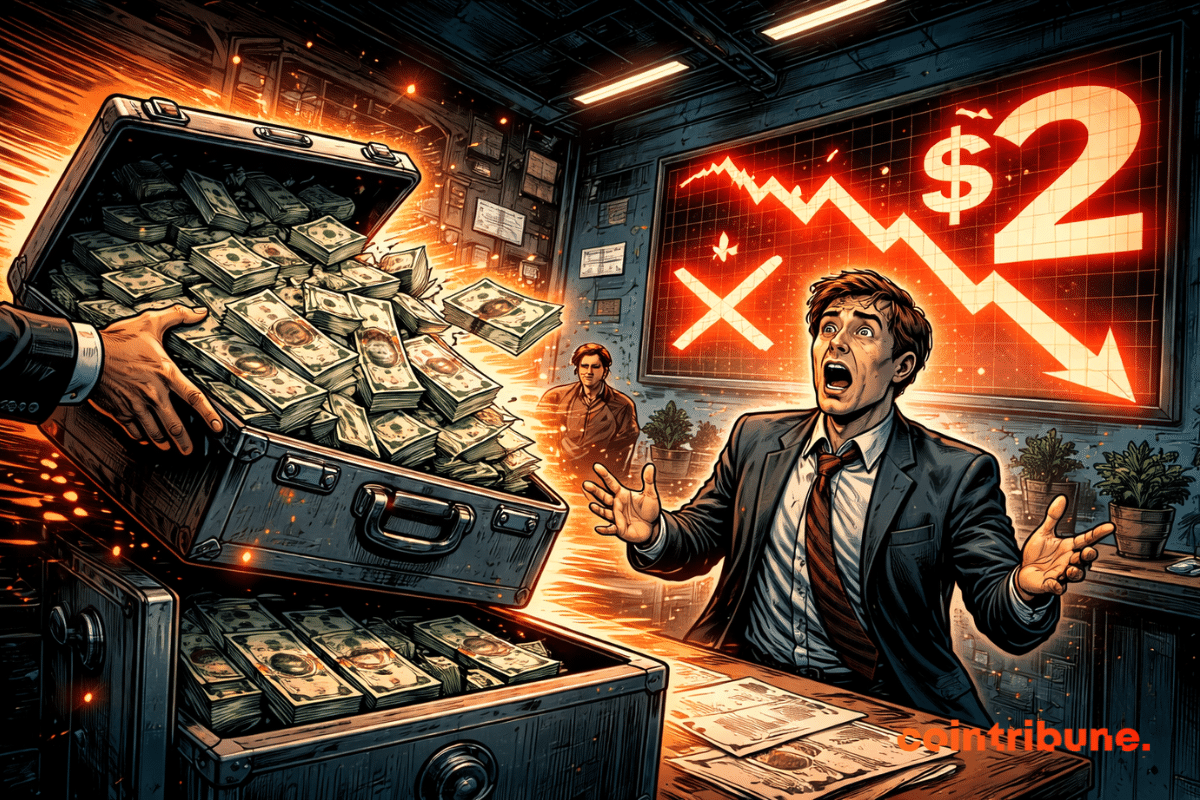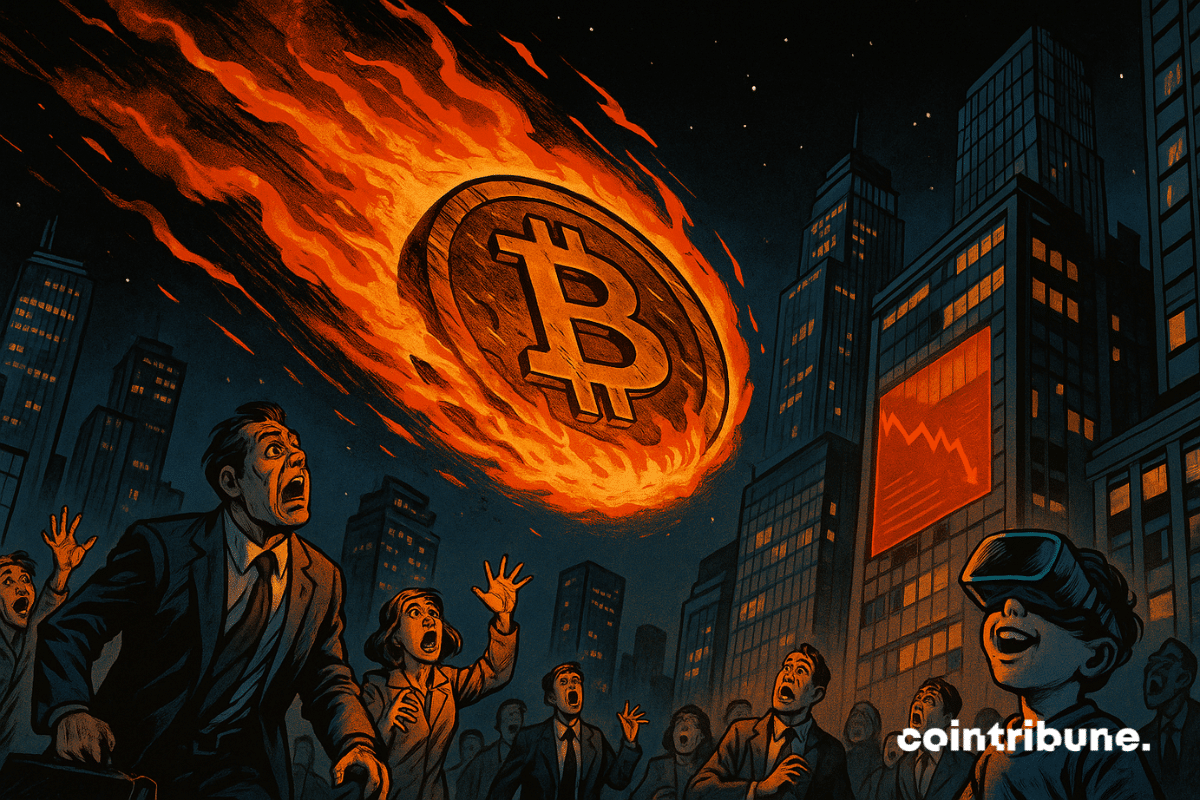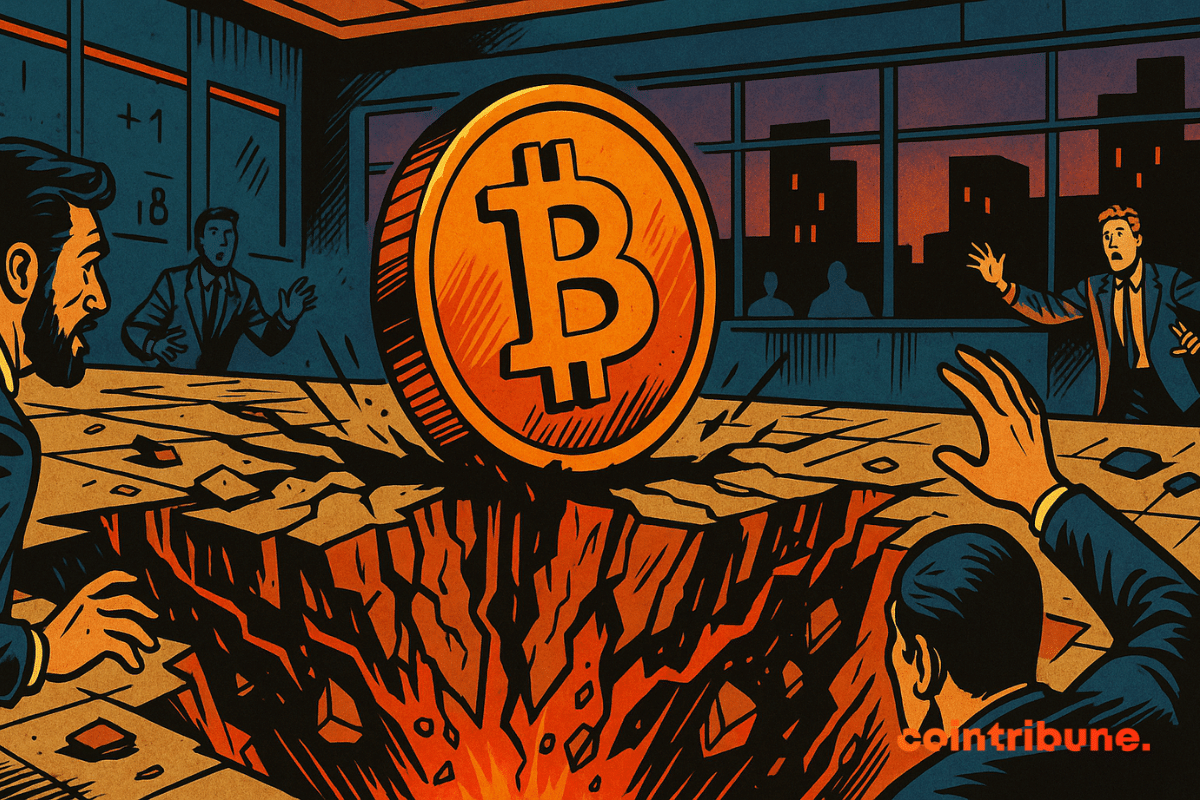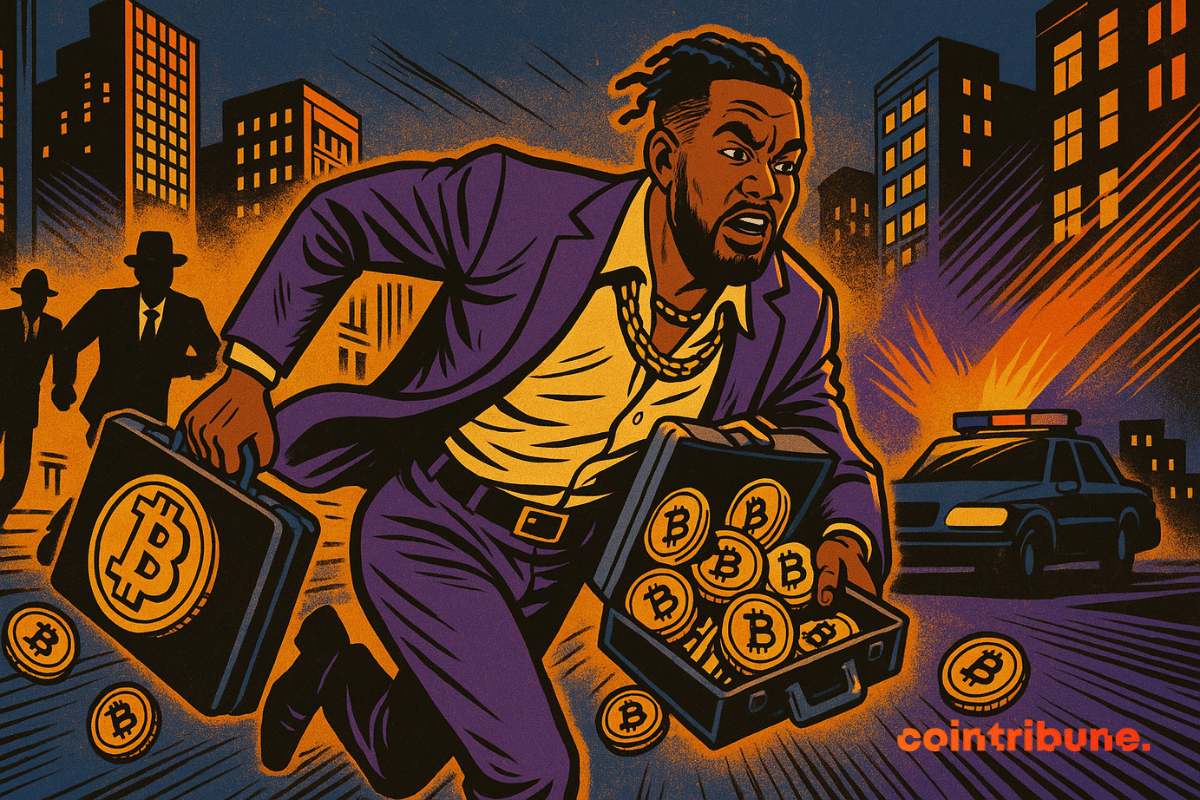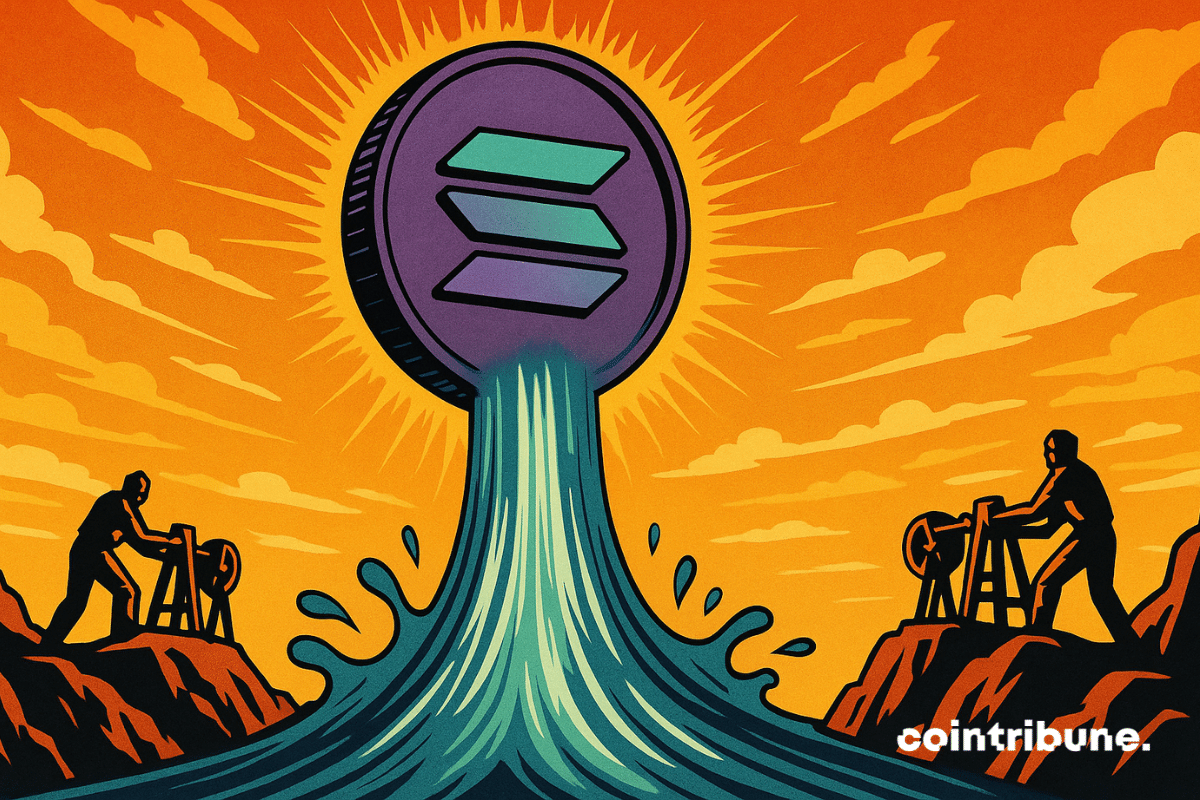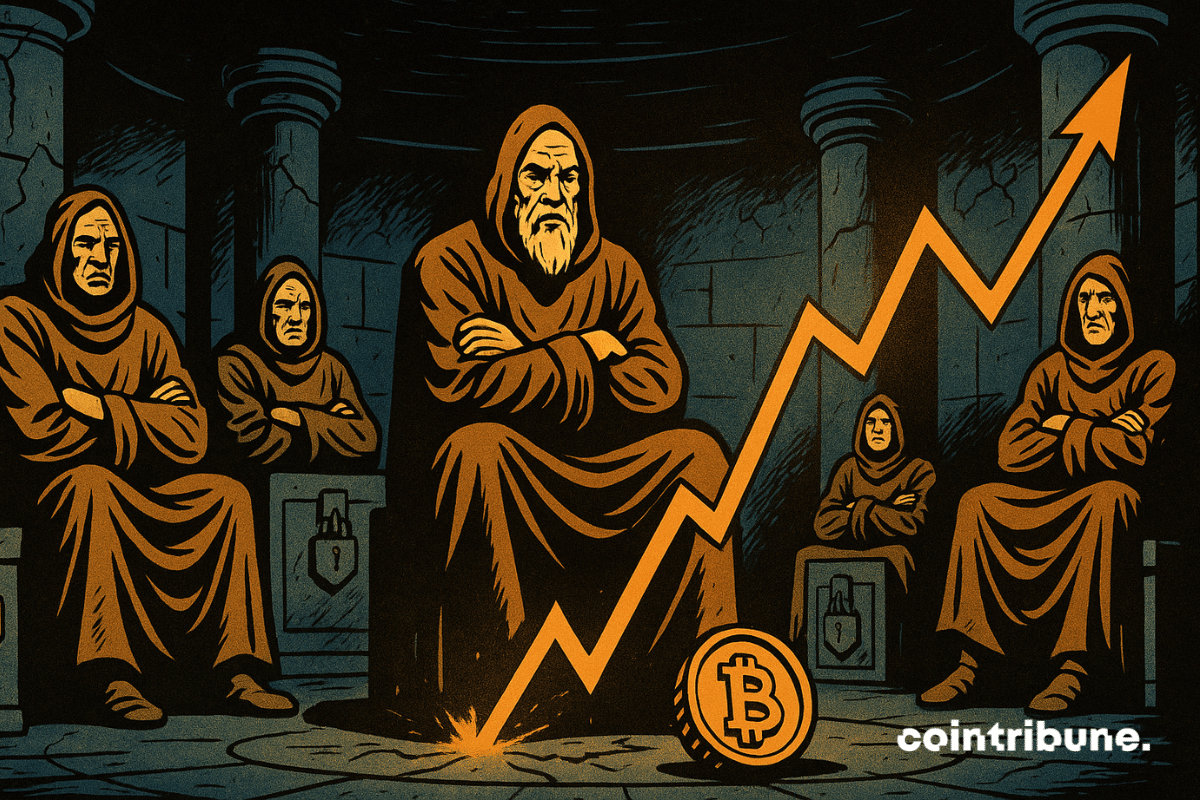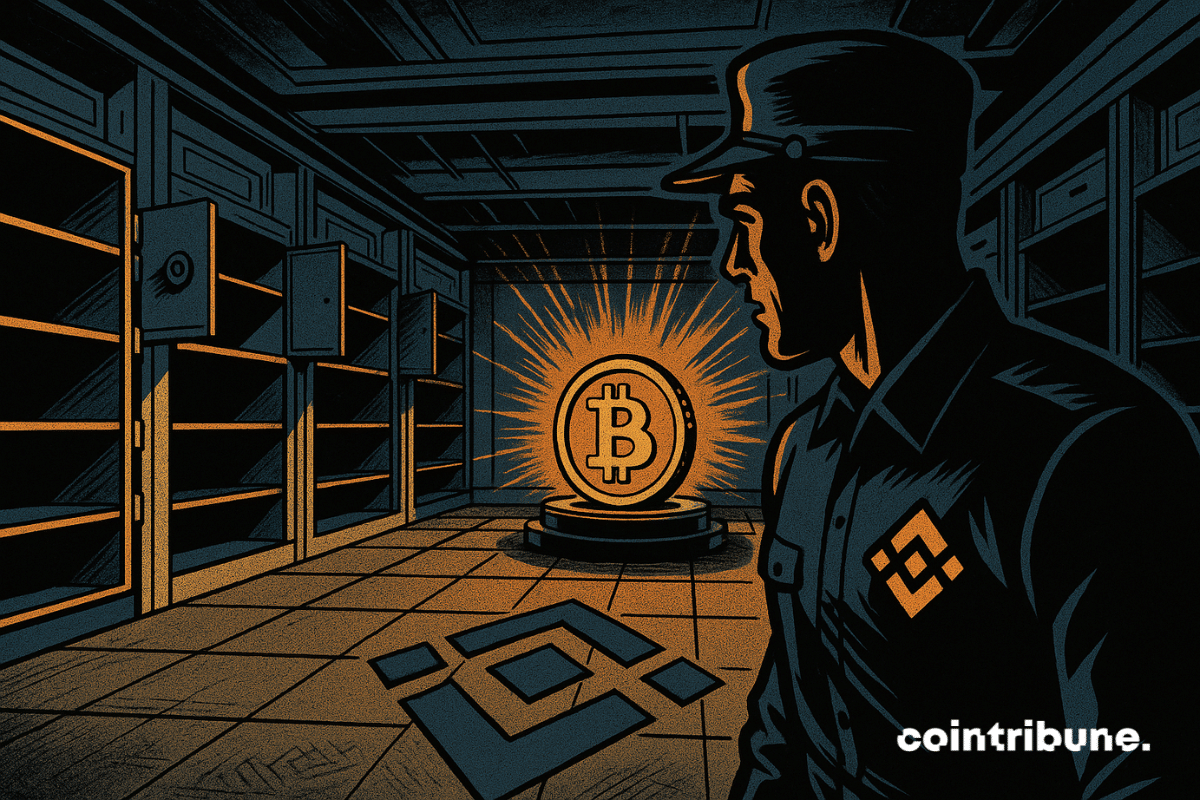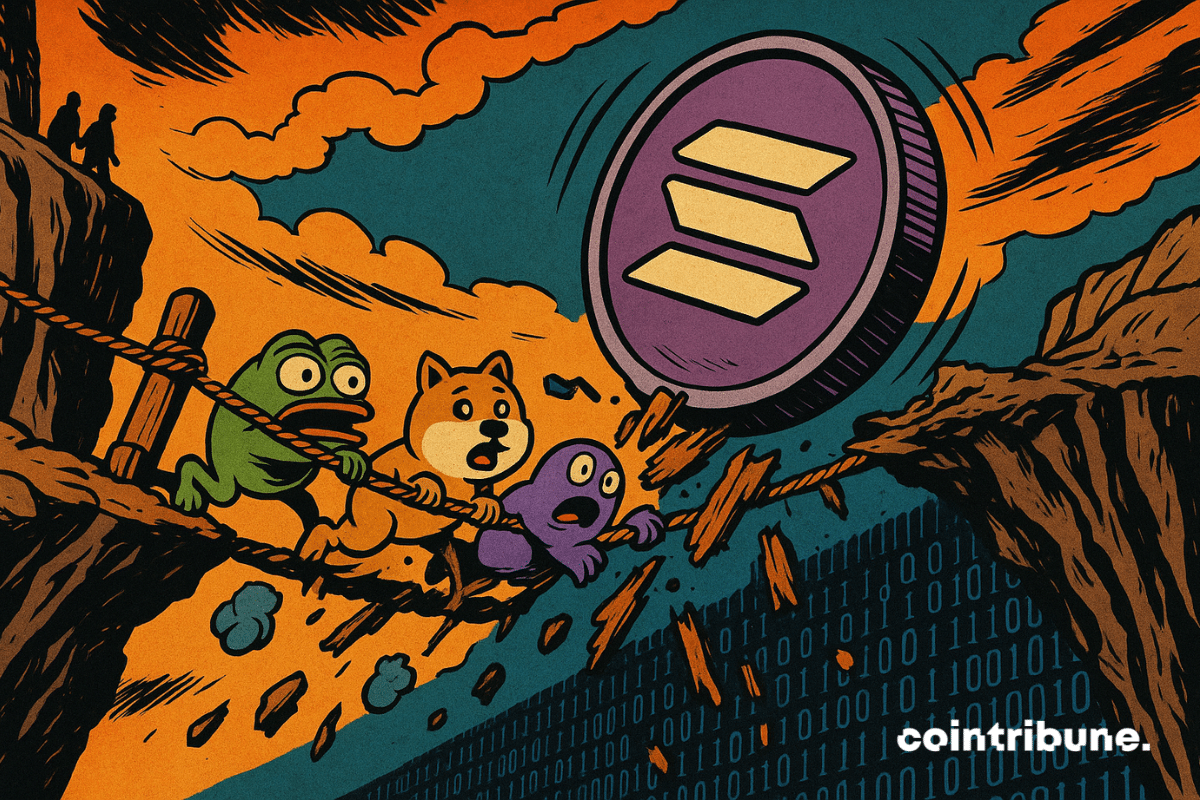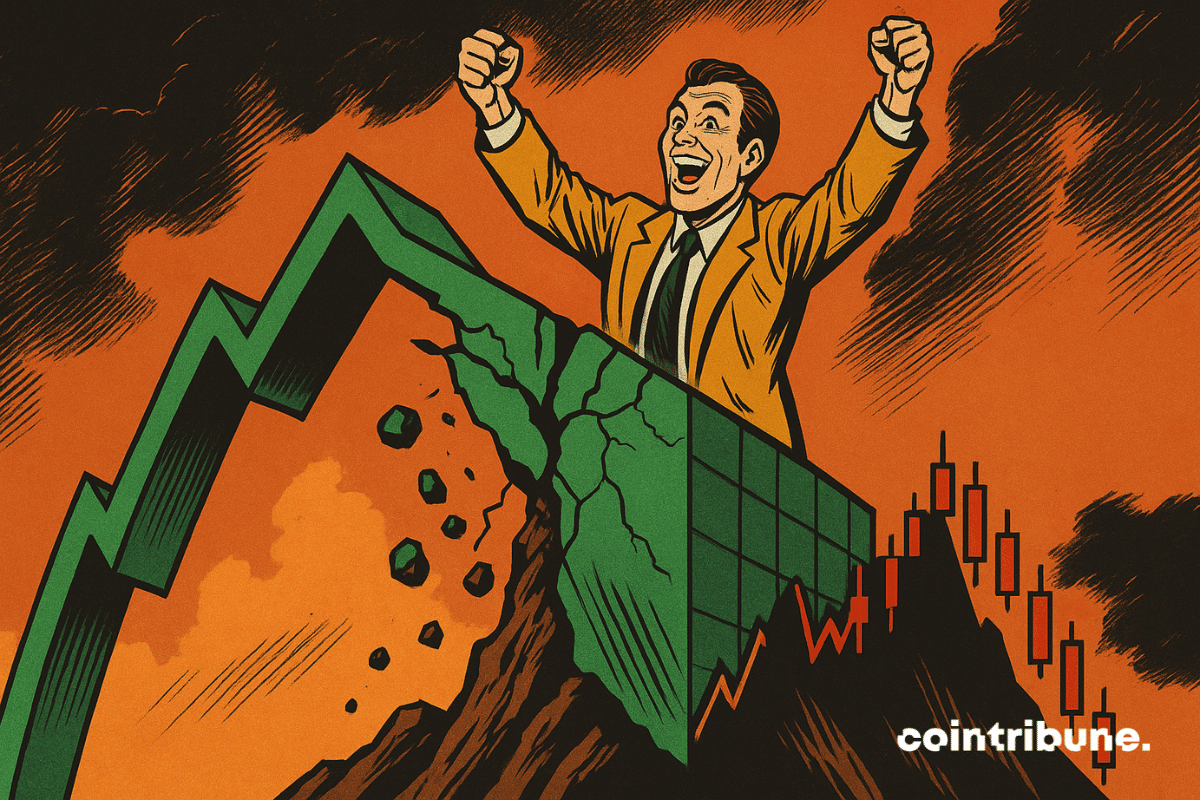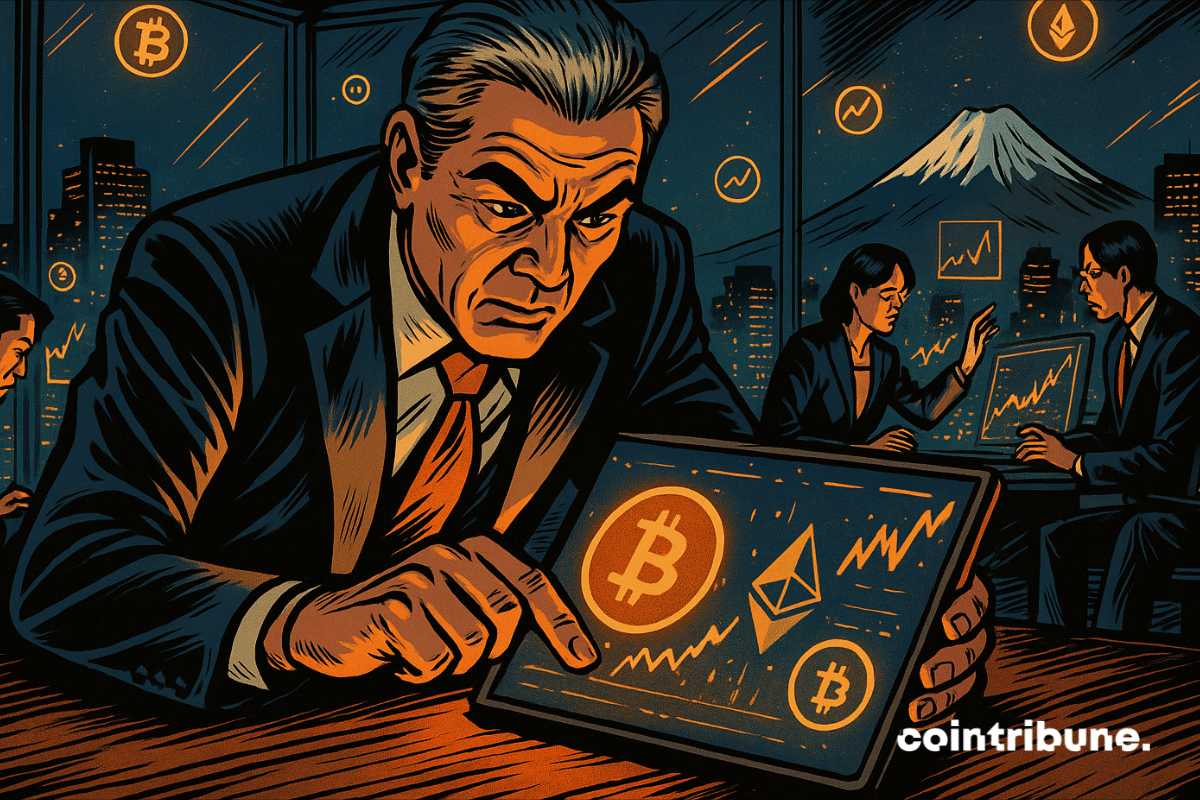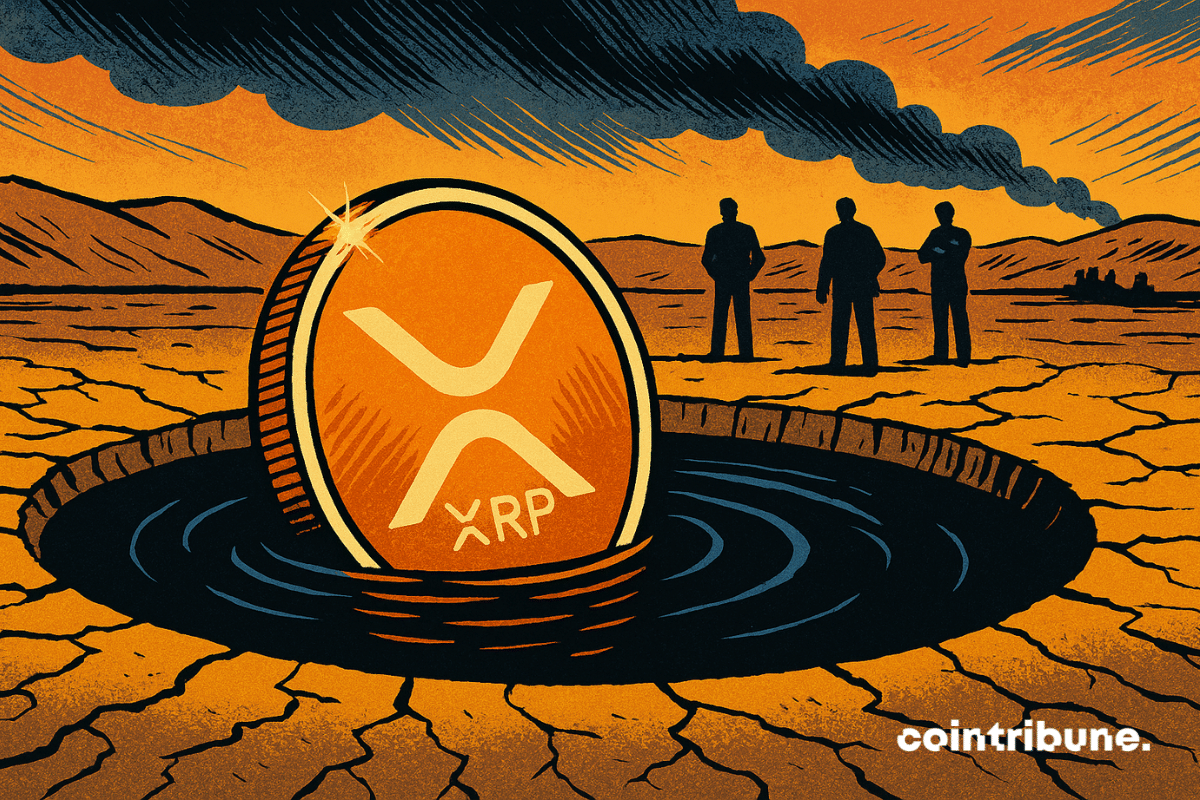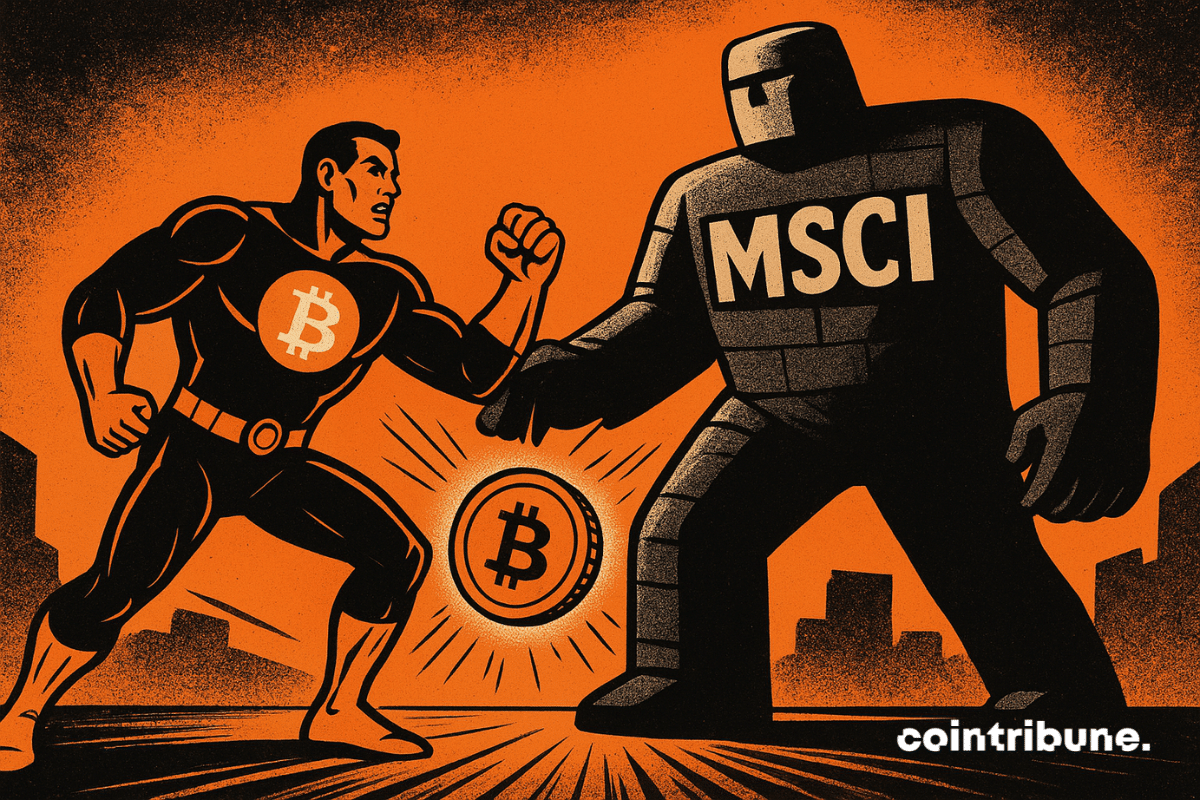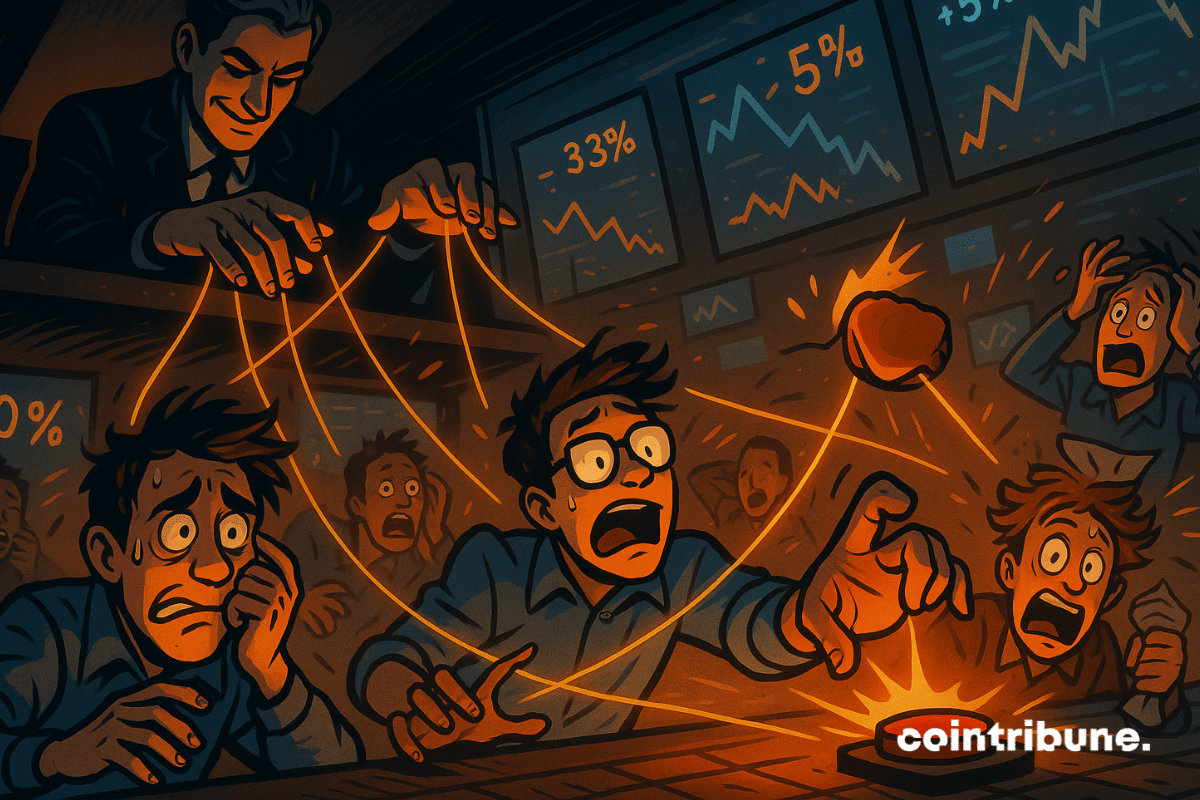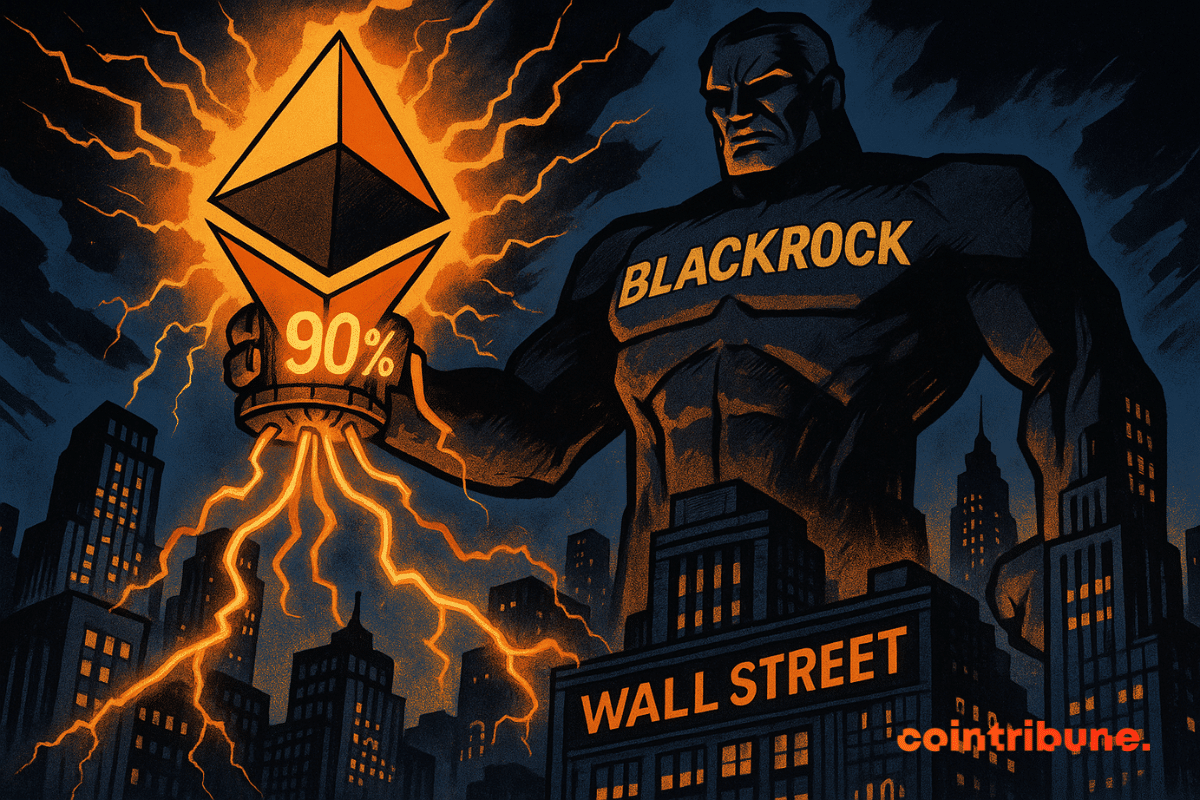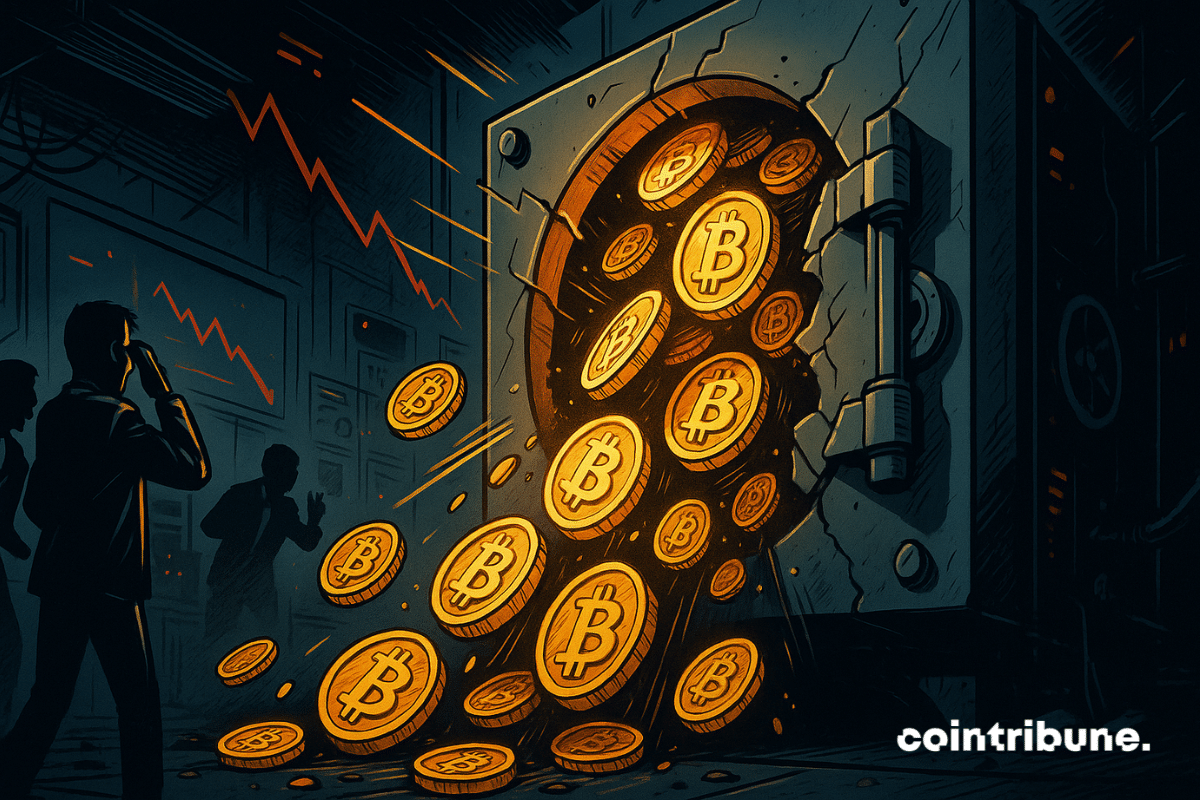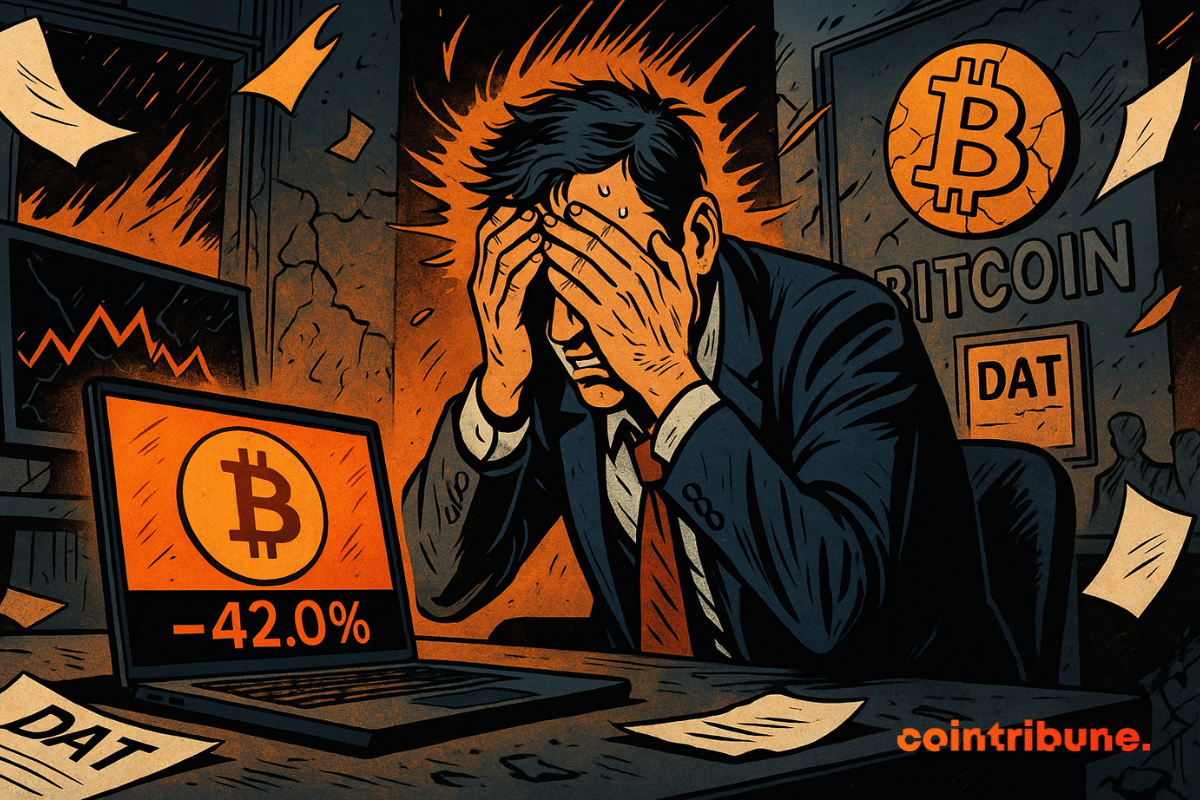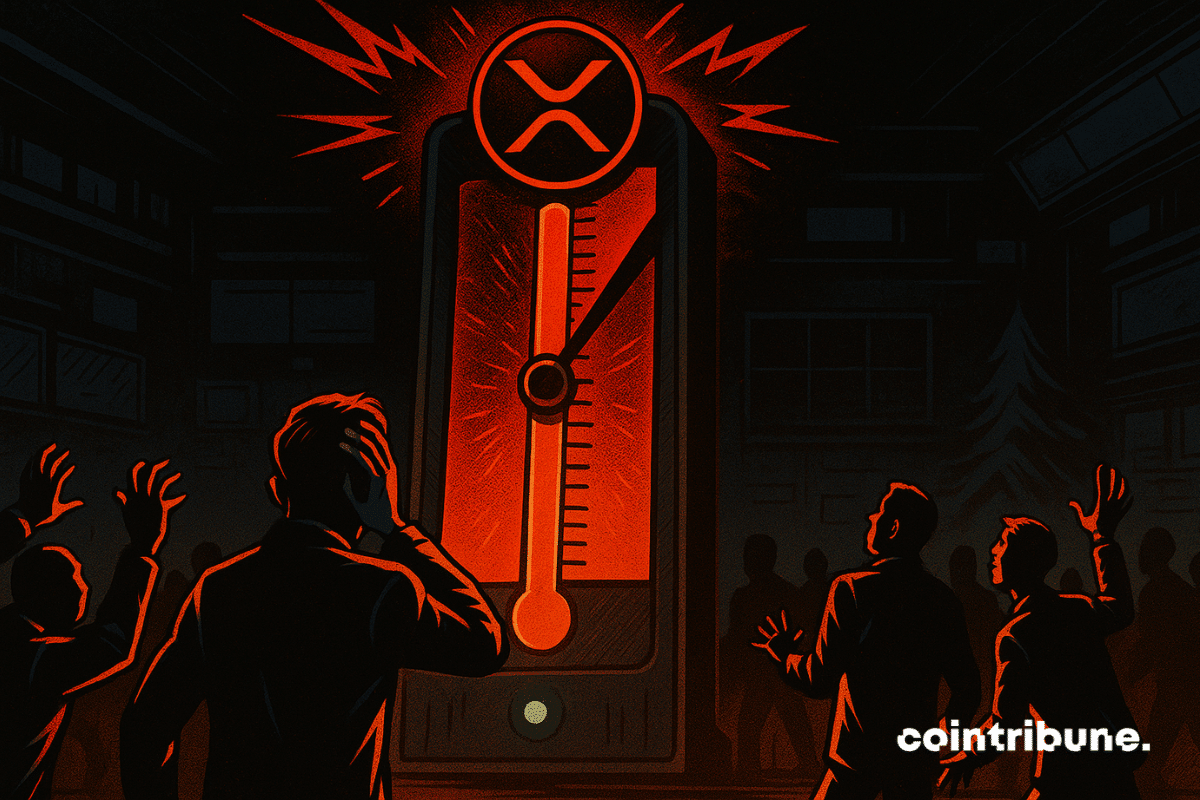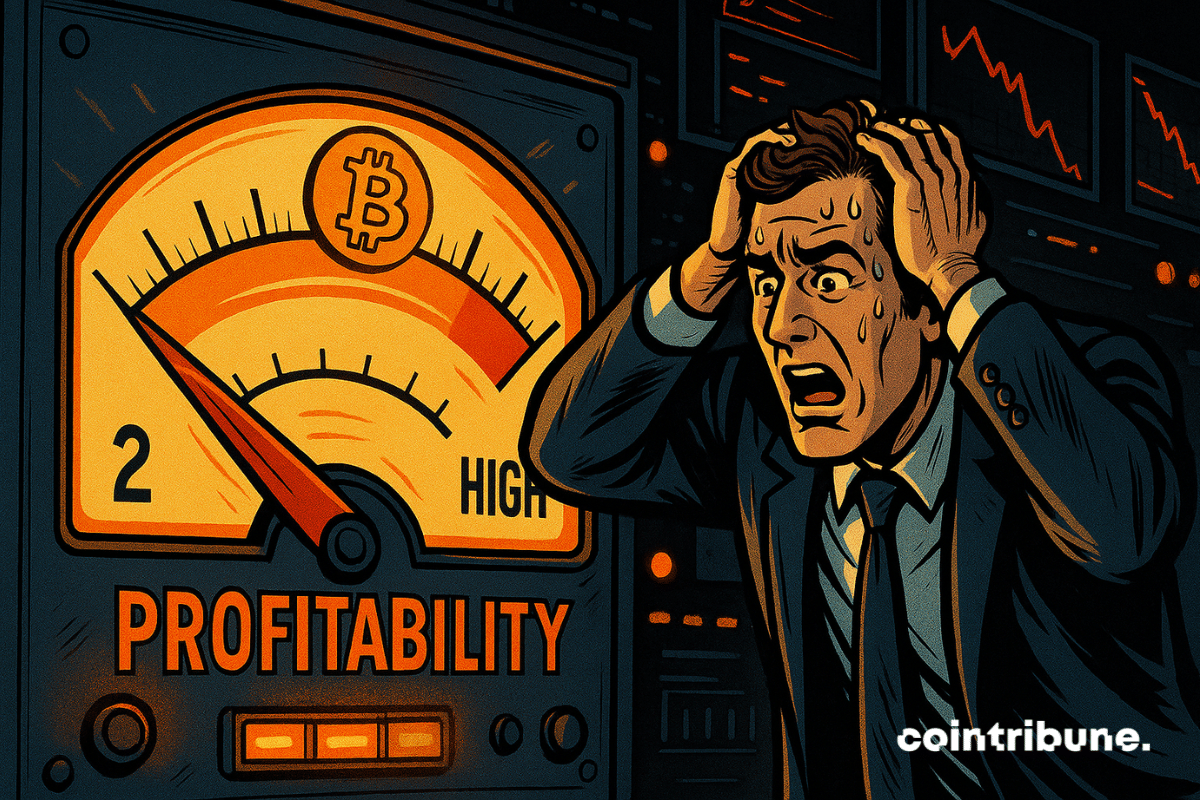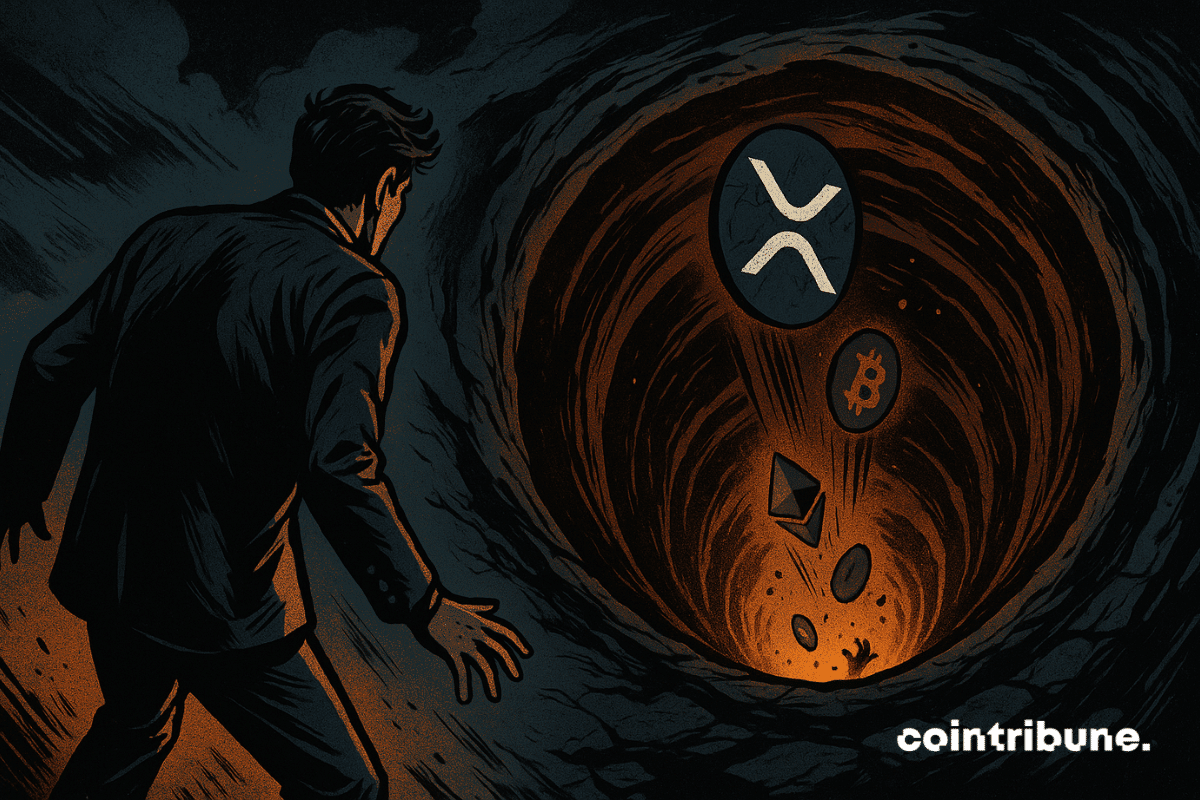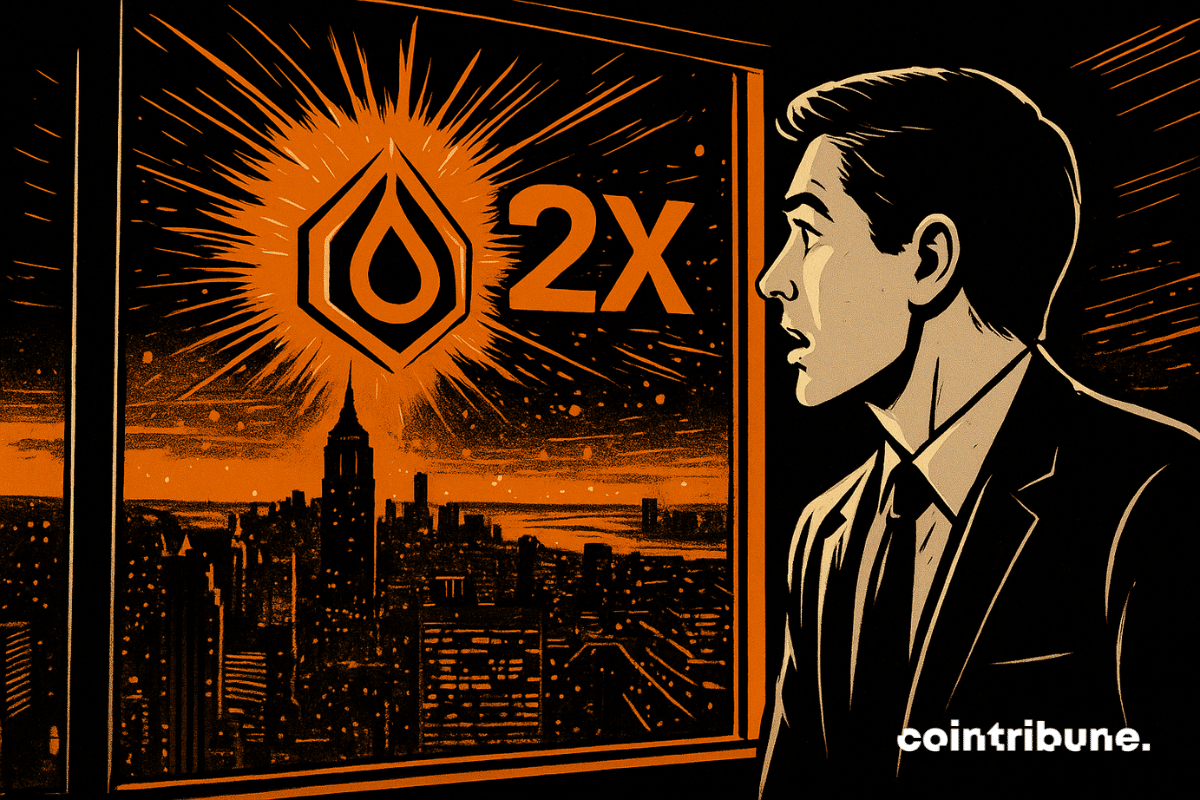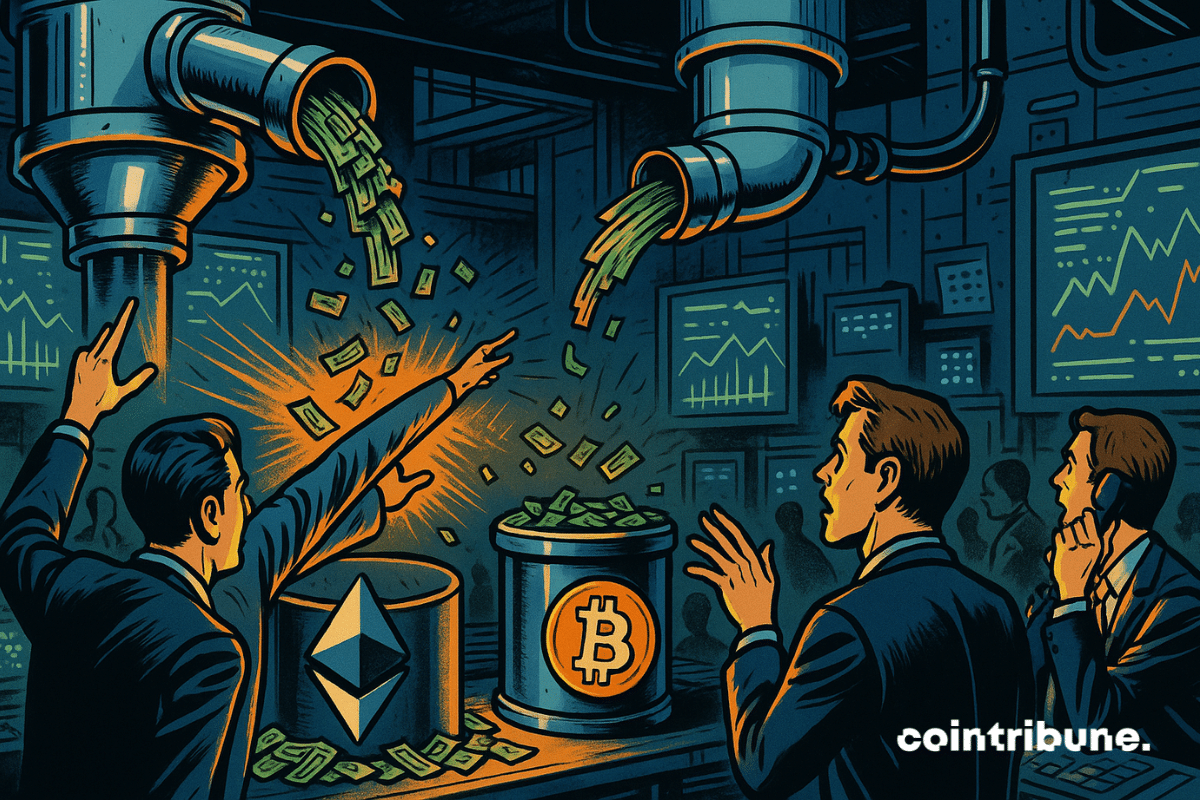Hyperliquid submits a rare decision to its validators: to recognize as excluded from the supply the 37 million HYPE accumulated in its assistance fund, an address without a private key funded by trading fees. This governance vote, without on-chain action, could remove nearly one billion dollars from the circulating metrics. In a context where readability of economic data becomes central, the protocol plays a strategic card to clarify its tokenomics and strengthen its credibility.
Theme Trading
For the first time in six weeks, institutional bitcoin purchases surpassed the supply coming from mining. This subtle reversal, revealed by CryptoQuant data, occurs in a market undergoing consolidation, marked by a retreat of retail investors.
The crypto market was hit by a wave of heavy corrections as a rough weekly outing triggered cautious sentiment among investors. During the downturn, heavy liquidations were recorded as some whales took profits while others moved to limit losses. On-chain data shows increased activity from large Bitcoin and Ethereum holders. In fact, U.S. spot Bitcoin and Ether ETFs recorded combined outflows of over $580 million on Monday, extending a broader trend of capital exits. As these heavy outflows persisted, market watchers observed whales rotating capital into a new game-based memecoin project.
Kindly MD thought it could reinvent itself with bitcoin. Listed on the Nasdaq, the company refocused its strategy around the flagship asset after its merger with Nakamoto Holdings. However, the initial euphoria gave way to a sharp drop in the price, resulting in a formal warning from the American stock exchange. Without a rapid recovery, the company now risks delisting.
Despite strong institutional demand and nearly a billion dollars injected into XRP ETFs, the token fell below the symbolic $2 threshold. While incoming flows multiply, the spot market remains under pressure. This divergence between fundamentals and price is striking. Why is XRP falling while major investors are buying? Between a bullish signal and technical fragility, the market seems divided. Such a situation complicates reading the upcoming trends.
Bitcoin suddenly dropped to 86,700 dollars on Monday, December 15, triggering more than 210 million dollars in liquidations in one hour. This rapid and unexpected move surprised the market, recalling the strong vulnerability of cryptos to volatility and economic tensions.
BONK continues to face steady selling pressure, with price action offering no clear signs of a rebound. Recent moves reflect hesitation rather than strength, leaving traders cautious. As expected, the market remains without a clear direction, and volatility stays muted.
While markets remain under pressure, bitcoin is moving in an unusual calm. Stuck around 90,000 dollars, the asset shows volatility at its lowest. For several analysts, this phase of stagnation signals a major movement to come. Technical signals converge towards an imminent range breakout.
Rodney Burton, aka "Bitcoin Rodney", now faces a series of federal charges in the United States. Former promoter of the HyperFund project, renamed HyperVerse, he is charged with wire fraud, money laundering, and illegal transmission of funds. According to the indictment, millions of dollars of investments were allegedly diverted. The case marks a new step in the crackdown on abuses related to the promotion of unregulated crypto projects.
While Solana is losing ground in the crypto market, its ETFs show an unprecedented series of seven days of net inflows. In a downtrend, this institutional flow is intriguing: why inject so much capital into a declining asset? This contrast, between disinterest in the spot and enthusiasm for regulated products, raises questions about the real perception of the Solana project and its medium-term prospects.
While Bitcoin ETFs attract massive institutional inflows and macroeconomic conditions argue for a rebound in risky assets, the price remains surprisingly stuck below 90,000 dollars. This stagnation, out of sync with the prevailing bullish signals, points to invisible forces restricting its progress. Between yield strategies and sophisticated arbitrage, a more discreet mechanism seems to weigh on the market just as investors expect a new momentum.
The continuous decline of bitcoin reserves on Binance attracts the attention of analysts as the asset trades near $93,000. The latest data from CryptoQuant confirms an unprecedented drop, raising questions about the current market structure. This movement, far from indicating immediate weakness, invites examination of what drives these fund outflows and what they truly reveal about bitcoin's dynamics.
As the Bitcoin network crosses the zetahash threshold, the profitability of mining companies collapses. The hash price has fallen below 40 dollars per PH/s/day, a critical level that threatens the viability of many players. Faced with this paradox, companies in the sector are redirecting their strategies towards renewable energies. However, behind the ecological argument, it is an economic survival logic that dominates, revealing a profound transformation of the mining energy model.
Solana falters. Long presented as one of Ethereum’s most serious competitors, the blockchain today faces a significant decline in its fundamentals: liquidity drop, user disengagement, innovation slowdown. After months of euphoria, the ecosystem shows clear signs of slowdown.
While macroeconomic uncertainties weigh on this year’s end, every move of the Federal Reserve is closely watched. Last Wednesday, the Fed cut its rates for the third consecutive time, causing an immediate reaction in the crypto market. Bitcoin jumped beyond 93,000 dollars, driven by a renewed appetite for risk. This unexpected rebound, against the backdrop of looser monetary policy, raises as many expectations as doubts.
Wealthy investors across Asia are steadily increasing their crypto exposure, with most already invested and growing interest in ETFs and yield-driven products.
While the entire crypto market is showing signs of stabilization at the end of the year, XRP sends an atypical and potentially worrying signal. Its funding rate on perpetual contracts plunged to -20%, a threshold rarely reached even during high volatility periods. This configuration reflects a marked imbalance: short positions dominate while bulls seem to be withdrawing from the game. In a market so sensitive to liquidity and sentiment signals, this anomaly deserves special attention.
The $100,000 threshold for bitcoin fascinates as much as it divides. A symbol of global adoption and a completed bull cycle, it remains, approaching the end of the year, a goal that is moving away. On predictive markets, conviction is eroding: bettors no longer believe in it. Between uncertain monetary policy and the exhaustion of bullish flows, the momentum seems suspended. The dominant scenario is no longer the explosion, but waiting. And in this in-between, bitcoin plays a more strategic than euphoric game.
Michael Saylor’s company, Strategy, is facing growing pressure as it challenges MSCI’s plan to exclude crypto-treasury firms from major stock indexes. Strategy, which holds the world’s largest corporate Bitcoin reserve, warned that the proposal misjudges how digital-asset treasuries operate. More so, the plan risks distorting fair index standards.
Most casual users lose on prediction markets, while well-informed traders pull ahead, amid suspicions of insider activity and platform bug issues.
Is crypto at the dawn of its decisive moment? For Matt Huang, co-founder of the Paradigm fund, the industry is approaching a historic turning point, comparable to the arrival of Netscape in the 90s or the iPhone in 2007. These revolutions marked the mass adoption of the Internet and mobile. Today, between technological advances and the influx of institutional capital, crypto could experience its own tipping point, the one that moves a marginal innovation to global usage.
BlackRock discovers Ethereum staking and joins the yield banquet. But who is really dining at the table? The investor, the institution... or the tax authorities watching?
Bitcoin slipped below $90,000 at Wall Street's opening, wiping out gains made in Asia. This reversal comes despite signs of accumulation on exchanges, revealing a gap between short-term moves and a long-term holding trend. Selling pressure temporarily takes over in a market still torn between speculation and conservation strategy.
These companies thought they were riding the bitcoin wave, but they are drowning in their own debts. The crypto king is nosediving, and the kings of leverage are getting slapped.
Bitcoin has just crossed $91,000, but the euphoria is not spreading to all market segments. Mining company stocks fell 1.8% over the week, while trading volumes dropped 25%. This decline reflects less a simple technical pause than a deeper malaise in a sector weakened by rising production costs.
XRP is going through a rare moment of tension. While institutional investors continue to pour in via spot ETFs, social sentiment around the asset plunges sharply into extreme fear territory. This striking contrast between capital inflows and market panic feeds uncertainty. At the crossroads of fragile technical signals and a possible rebound, XRP becomes one of the most watched assets in the crypto ecosystem.
Below 90,000 dollars, bitcoin sends a strong signal. A key profitability indicator hits its lowest level in two years, marking a possible market reset. Behind an apparently stable price, on-chain data reveals a profound shift in investor behavior.
The social sentiment around XRP has just dropped to its lowest level since October, according to Santiment data. The crypto is going through what the platform describes as a "fear zone." This emotional downturn contrasts with past movements, where similar phases had preceded a marked rebound. In a tense crypto market, XRP could once again surprise.
Europe-based ETF issuer 21Shares has opened a new chapter for Sui-linked investment products in the U.S. after receiving approval to list the first exchange-traded product tied to SUI. The debut comes as crypto ETFs continue to roll out across major exchanges, attracting steady interest from both retail and institutional traders.
Supported by record inflows into spot ETFs and favorable technical setup, Ethereum quietly outperforms bitcoin. As flows shift and retail interest rises again, a turning point is happening. Is the trend changing permanently?



